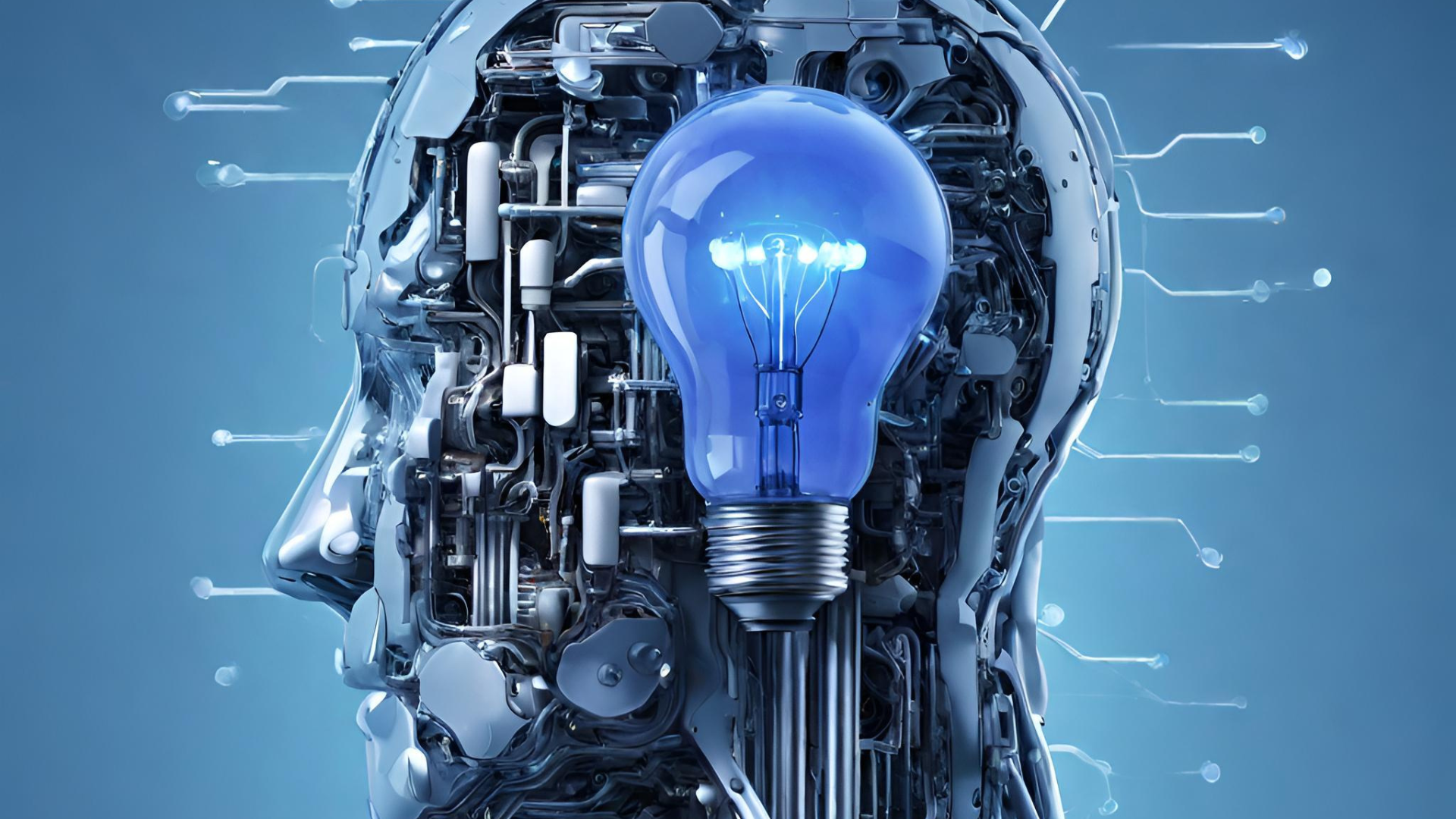Navigating Brilliant Corners: Helping Organizations to Improvise Adaptively in the Face of Rapid Change
Increasing cycles of technological progress and innovation are making even short-term predictions difficult. The future is bearing down on us without a clear picture of what it will bring. Will we merely react? Or can we creatively adapt to it?
We have already explored ideas and practices surrounding adaptive learning organizations, learning ecosystem models, and incremental innovations toward giant steps in organizational evolution. We can use these models as a foundation to build the capacity to anticipate change – even drive it – rather than merely react. This capacity is central to an adaptive learning organization and should be imperative for a company’s future vitality and successful survival. There are many twists and turns on the road to agility and adaptability. We should aspire to navigate its corners brilliantly with momentum towards our greatest possible futures.
Improvising an Emergent Strategy
As each turn unfolds spontaneously before us, our most adept moves emerge as improvisations (not wholly constrained, nor completely free), rather than as conditioned behaviors that are carefully planned, well-structured, and fully documented. Learning is the primary process that drives this agility and adaptability. Yet, its leaders do not see learning as a core competency of the business. Taken at face value, the largely negative perception of organizational learning functions, with low engagement and negligible ROI, should drive us to prioritize and design learning solutions differently. Consider that learning staff are often reacting to requests to use training to put out fires and to apply a quick fix to symptoms on the surface that may be caused by deeper systemic problems. The result is often a waste of time, money, and resources on solutions that have little or no impact on improving the business.
We all face these distractions that keep us from focusing on the thing that matters most – impact. In order to do this, we need to establish learning as the foundational process for an adaptive strategy by developing and supporting learning loops and knowledge flows throughout the organization.
If we take music as our metaphor, this approach is more akin to jazz or blues (and many other types of music where improvisation is a prominent part of the tradition) than to a classical orchestra. Smaller teams (e.g., agile software development), like a jazz quartet, function best in this format. Jazz bands of 3 to 7 people are able to improvise because of the intensity of the highly interactive improvisational process. While each member brings their particular expertise and individual approach, they listen deeply, trust each other, experiment, take in real-time feedback, and adapt. When teams hit a flow state, or fall into a groove, something unexpected and beautiful emerges—a product of the people and processes in a particular place and time. Interaction, expertise, and productive collaboration emanate from the learning loops and knowledge flows of each team member converging in dynamic crosscurrents in the space of improvisation and the context of culture.
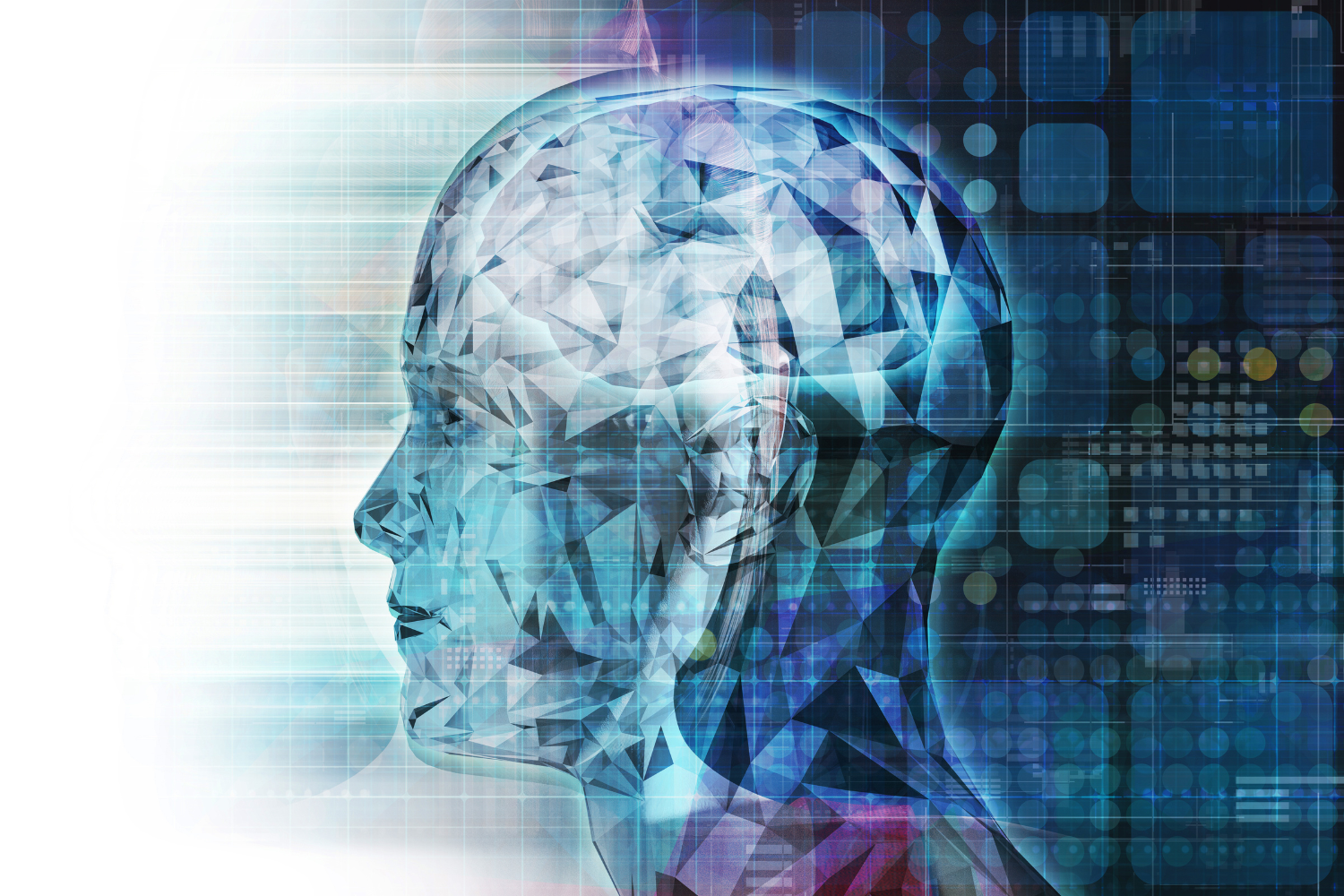
Organizations are Complex Adaptive Systems
How do we scale improvisational emergence to a large organization? If we want to proactively focus on impacting the overall organization, we need to model enough of what the organization looks like and build our plan from there. Understanding organizations fractally, at multiple levels of scale, allows L&D staff and business leaders to come from their respective sides to a commonplace. In order to understand organizations, we need good mental models. But what are we actually modeling? Perhaps another metaphor is in order. This time we turn to the world of biology.
An organism, a living being, is a type of complex adaptive system. An organism, like an organization, consists of small components that self-organize through communication (transfer of information, electrochemical signals, DNA, etc.) and feedback loops according to relatively simple patterns. The whole that emerges is greater than the sum of its individual parts. For example, cells self-organize into organs (e.g., heart, lungs), organs into systems (e.g., circulatory, respiratory), systems into humans, and to take it further, humans into groups and organizations into markets, economies, and society. The feedback loops that drive self-organization in human social systems involve increasingly complex knowledge structures that have evolved based on our capacity to learn and transfer concepts and practices. That is, learning loops and knowledge flows.
Playing Organizational Jazz
If we want to enable the ability for people to improvise within the organization, we need the equivalent of a “chart” in jazz. The chart in jazz defines the structure that the group is improvising around. Charts provide just enough information for the musicians to understand the space and how they can work together to explore it.
In the case of an organization, we need a chart that will define the space for exploration to define where value can be created. Being that organizations are complex adaptive systems, we need a model for our chart that will work at multiple scales and provide a flexible level of fidelity for teams to improvise within.
Process/Asset modeling is one methodology for building the chart. In Process/Asset modeling, there are two primary entities of interest for the model:
In Process/Asset modeling, a team can define business focus areas, define the major process and supporting processes, and map the assets that are created, consumed, or used by the processes. Further, these models can be extended to include learning-focused processes and assets that feed the business process itself.
These types of models can be quickly created to give a team the chart for finding where value might be present. By building Process/Asset models, a team can start to understand the key processes and assets in a business focus area. Through that understanding, a team can start to identify high-value assets and processes. Further, a team can start to identify intersections where value can be created by building or enhancing behaviors of the learner segments that serve as assets to the process. This type of model allows a clear definition of KPIs and business outcomes that can be achieved.
The Process/Asset model starts to show a clear chart for the L&D team to understand the value and impact points and to define the supporting or enabling functions to drive the value. The entire goal here is to give the team the ability to find valuable intersections within the enterprise model and define behaviors that need to be present or enhanced at these intersections. Once these high-value behaviors are identified that can drive KPIs or business outcomes, the L&D team can start to focus on instructional strategies that can enable the focused development of the behaviors themselves.
How do We Use Process/Asset Models?
There are some discrete and simple steps to start using Process/Asset models. Here’s an overall activity map that you can use to guide a team on the creation of these charts.
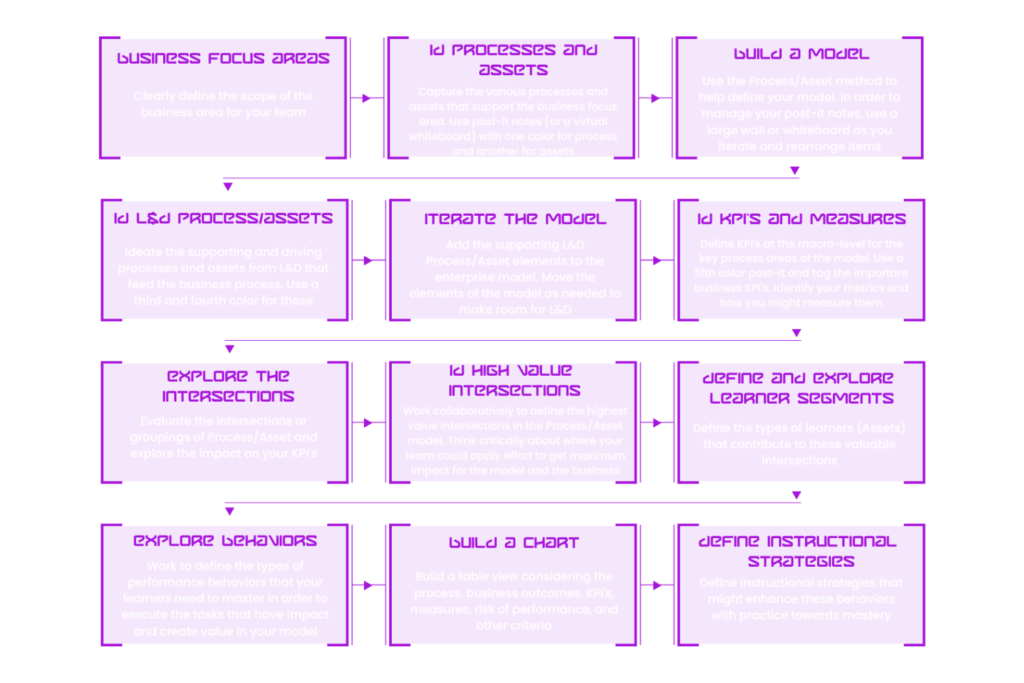
Once you have a chart on this, you can use other methodologies like the Successive Approximation Model (SAM). SAM is a different approach to the development of instructional design products. It addresses the performance need through iterations and repeated small steps, rather than with perfectly executed giant steps typically found in ADDIE implementations.
To simplify the creation of authentic experiences the CCAF methodology (which stands for Context, Challenge Activity and Feedback) is crucial in ensuring consistency and efficiency in development. Designing interactivity for e-learning must require the learner to do something that is cognitively demanding, and leads to improved performance. While the challenge of designing experiences like these might seem daunting, the CCAF model is designed to make creation as simple as possible.
People leveraging this Process/Asset methodology say things like “Now we have a model and language that will help us really collaborate effectively with our business partner stakeholders” and “we’ve been just designing learning as order takers and not really designing things that will impact the enterprise, now we have the tools to really make a difference.”
Something to look at further is the process of Behavior Catalog development. This technique is critical to reframing conversations around prioritization of effort, budgets and learning focus for the business. Use the Behavior Catalog to help answer:
- What is the most critical behavior for success in this specific business outcome?
- Can talent be hired or must training be provided to be successful in this specific case?
- Do we really need an expert or can the business support success in other ways?
- What really drives behavior: compensation, management or internal motivation?
So what does this mean for you? You can model your organization as a complex adaptive system by examining the key assets of the organization, the processes that support them, and the value they generate.
For example, the core process of Custom Solution Engineering (see below) is supported by a number of assets (Solution Design, Technical Approach, Deliverables, Schedule and Tasks and Cost Estimate). Each of those assets is created by the Analysis and Design sub-process and performed by a Product Sales Engineer and fed by the Scope and Goals from the Discovery Sub-Process. Moving down one more fractal layer, the whole process is really fed by a Productive Sales Engineer which is created through its own process and asset structure supported by L&D.
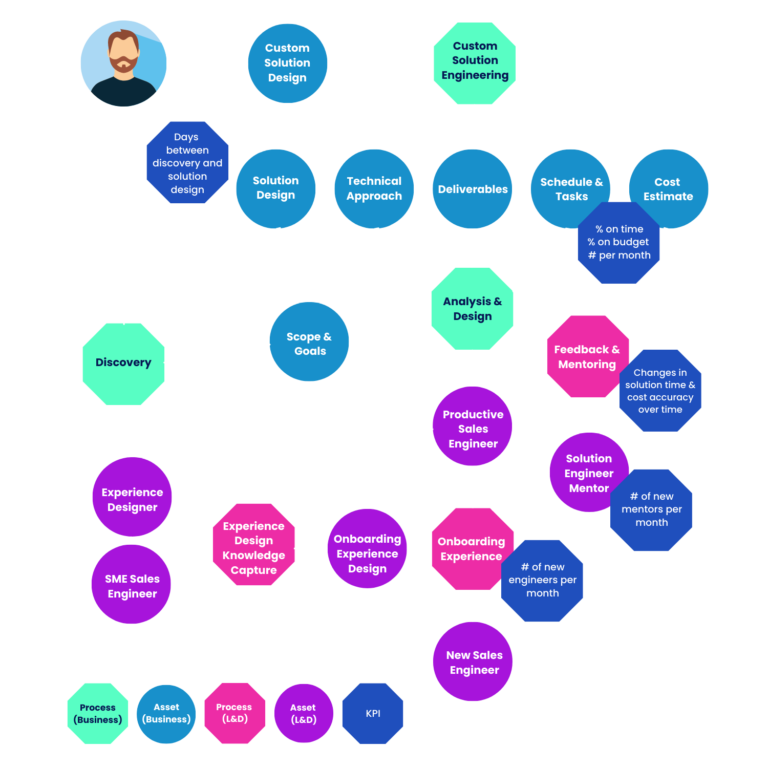
Once the overall structure has been defined, KPIs or measures (dark blue) can be identified at critical intersections. The example above shows several measures that are critical for the process. These KPIs or measures can be expanded into more formal structures for analysis and prioritization. Once defined, you can start to build a chart (see below) of KPIs, measures, value, learners segments, behaviors and instructional strategies to serve as the keyframe for planning performance on the model at the scale you have chosen.
These charts can be extended with other elements that include items like: frequency, complexity, drivers, risk, performance outcomes, or skill acquisition. This is meant to be customizable to the level of inquiry that you want a team to be doing at any scale of the organization.
You can create an enterprise Process/Asset model by sitting down with stakeholders in your organization and mapping out the assets and processes in their purview. This will help you to identify the behaviors that generate value for the organization in fulfilling its purpose. These should then serve as a guide for your strategy to enable learning loops and knowledge flows that develop assets and processes that further enhance the adaptability of the organization.
Process/Asset modeling provides a number of benefits to the Adaptive Learning Organization. First, it gives you the focus to be able to design learning experiences and performance support that targets the behaviors that generate value and to avoid training solutions that do not. Second, by doing this modeling with your business partners, you can gain their buy-in and trust. The exercise demonstrates your commitment to directly supporting their work and in turn, your stakeholders will clearly see the value of your efforts. This leads to better collaboration with business units. Finally, the Process/Asset model helps to put the locus of learning where it truly belongs, embedded within the workflow.
Conclusion
Our goal in this series of articles is to provide you with the concepts and practices to enable your organization to improvise adaptively in the face of rapid change. Leaders need to recognize that learning is the means to achieve this and that learning functions should be a core part of business strategy. We have attempted to illustrate these points by focusing on the learning loops and knowledge flows distributed throughout human social activity. We can help to give our organizations an adaptive advantage by modeling the processes and assets that generate value. By embedding learning experiences within these workflows, we can enhance the behaviors that increase value creation. We also need to allow for improvisation within these processes to give people the power to make adjustments for optimal outcomes. This way, you can nurture the conditions that allow your organization to not only react well to the twists and turns in market conditions but to anticipate each corner with brilliance.






